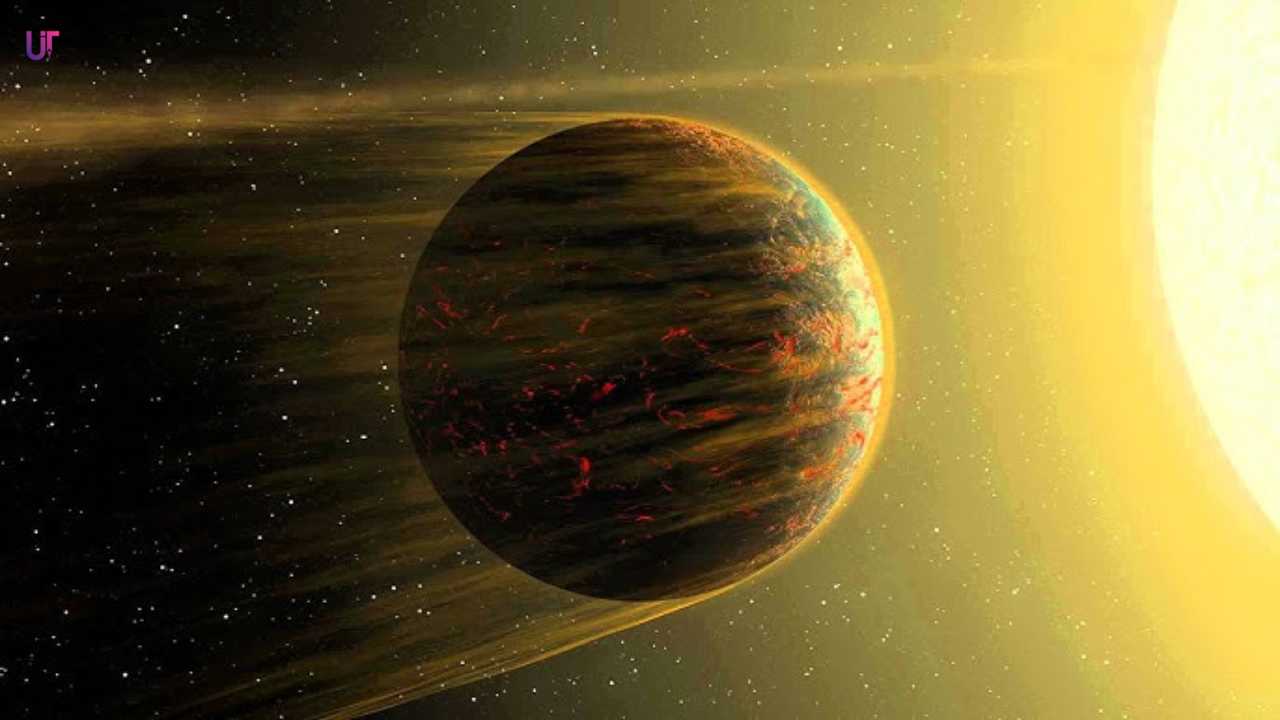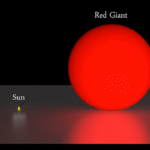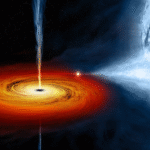Category: Extreme Worlds | Discovered by NASA’s Spitzer & Other Observatories
A World That Sparkles in Theory
Imagine a planet where mountains might glitter, where the crust could be rich in graphite, and where, deep below, diamond may make up a large part of its structure.
That isn’t science fiction — it’s 55 Cancri e, one of the most talked-about exoplanets ever found.
Orbiting so close to its star that a “year” lasts less than 18 hours, this world is scorched by heat — yet beneath its blazing surface, its chemistry may hold a treasure of unimaginable scale.
🪐 Planetary Profile
- Name: 55 Cancri e (also known as Janssen)
- Type: Super-Earth / Carbon Planet
- Distance from Earth: ~41 light-years
- Radius: ~1.9 × Earth
- Mass: ~8 × Earth
- Star: 55 Cancri A — a yellow dwarf (similar to our Sun)
- Orbital Period: 17.7 hours
- Orbital Distance: 0.016 AU (about 25 times closer to its star than Mercury is to the Sun)
- Discovery: 2004 (confirmed later by Spitzer observations)
55 Cancri e belongs to a multi-planet system called 55 Cancri, which hosts at least five known planets.
But this particular one stands out — not for its habitability, but for its sheer strangeness.
A World Too Close for Comfort
Because 55 Cancri e orbits its star extremely closely, it endures surface temperatures exceeding 2,000°C (3,600°F).
It is almost certainly tidally locked, meaning one side always faces the star while the other side remains in endless darkness — much like the Moon does to Earth.
On the dayside, rock and metal likely melt into oceans of lava, while the nightside might be shrouded in a thin layer of vaporized minerals.
No known material could survive there unchanged — yet 55 Cancri e remains stable in its orbit, a cosmic jewel balancing between fire and pressure.
The Diamond Hypothesis
In 2012, researchers proposed something astonishing: based on its mass, radius, and the composition of its host star, 55 Cancri e might be a carbon-rich planet.
Unlike Earth, whose interior is dominated by oxygen-rich silicates, this planet may have formed in a region of its solar system where carbon outnumbered oxygen.
If true, then under the crushing internal pressures — millions of times Earth’s atmospheric pressure — carbon could crystallize into diamond deep within the mantle.
In essence, its geology could be the reverse of ours:
- Instead of granite and basalt, there might be graphite and diamond.
- Instead of water oceans, molten carbon and silicate lava.
This is why it’s often nicknamed “The Diamond Planet.”
Of course, we can’t confirm that diamonds truly glimmer beneath its surface — but the chemistry and physics make it a plausible, if poetic, reality.
A Changing Atmosphere
When astronomers studied 55 Cancri e using NASA’s Spitzer and Hubble Space Telescopes, they found something even more intriguing: its heat appears to shift around over time.
This suggests that the planet’s atmosphere — if it exists — might not be uniform.
Some observations hint at a dynamic, vapor-rich atmosphere, perhaps containing hydrogen, helium, or volatile compounds like sodium and oxygen.
Others suggest it might be nearly airless, with gases constantly burned off and replenished by the lava surface.
In 2022, new data from the James Webb Space Telescope (JWST) began offering clues that the planet may indeed have a thin atmosphere, possibly made of volcanic gases escaping from below.
If true, it could mean 55 Cancri e behaves like a world in constant eruption, where the crust melts and reforms daily — a living furnace of stone and flame.
The System It Calls Home
The host star, 55 Cancri A, is part of a binary system about 41 light-years away in the constellation Cancer.
It’s slightly smaller and cooler than our Sun, yet bright enough to illuminate its planets vividly.
Alongside 55 Cancri e, there are four other planets, ranging from a small rocky world to massive gas giants — a diverse mini solar system that challenges our understanding of planet formation.
What Makes It Fascinating
55 Cancri e isn’t habitable — it’s hostile beyond imagination.
But it teaches us something profound about planetary diversity.
It reminds us that not all Earth-sized planets are Earth-like.
Some may be lava worlds, ice giants, or carbon crystals under crushing skies.
It’s a symbol of cosmic creativity — proof that even small differences in chemistry or distance from a star can create worlds utterly unlike our own.
UTOPEDIA NOTES
“In 55 Cancri e, we glimpse the universe’s extravagance — a place where pressure could turn carbon into diamond, and daylight burns brighter than fire itself. Not every world invites life. Some exist to show us beauty in extremes.”


